Sarah Sundin's Blog, page 221
May 20, 2018
Today in World War II History—May 20, 1943
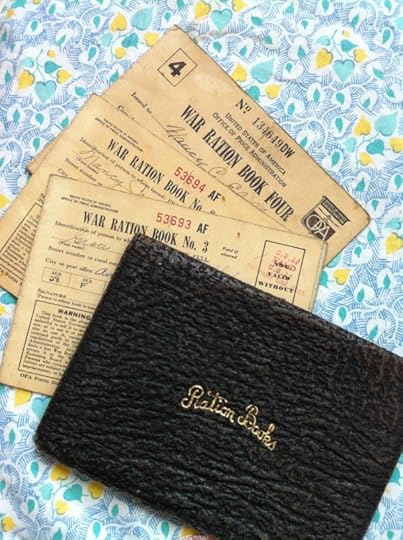
US rationing books owned by my mother and grandmother, WWII (Photo: Sarah Sundin)
75 Years Ago—May 20, 1943: US Tenth Fleet established in Washington, DC under Adm. Ernest King to control shore-based antisubmarine operations in the Atlantic, the only US fleet without ships.
US War Ration Book Three is distributed by mail.
May 19, 2018
Today in World War II History—May 19, 1943
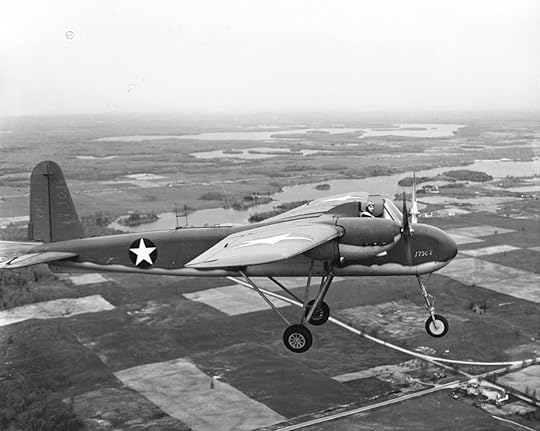
Navy Lt. C.C. Corley flying TDN-1 attack drone on its first (piloted) test flight from Traverse City, MI, 19 May 1943 (US Navy photo)
75 Years Ago—May 19, 1943: German U-boat U-954 sunk in North Atlantic by British sloop Sennen and British frigate Jed; all hands lost, including Peter Dönitz, son of Adm. Karl Dönitz.
First (piloted) flight of US Navy attack drone TDN-1, Traverse City, MI.
May 18, 2018
Today in World War II History—May 18, 1943
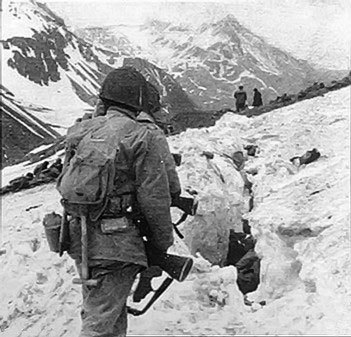
US troops traveling across snow and ice during the Battle of Attu in the Aleutian Islands, May 1943 (Australian War Memorial)
75 Years Ago—May 18, 1943: On Attu, southern and northern landing forces of the US Army link.
Allies begin major air offensive against island of Pantelleria between Sicily and Tunisia.
May 17, 2018
Today in World War II History—May 17, 1943
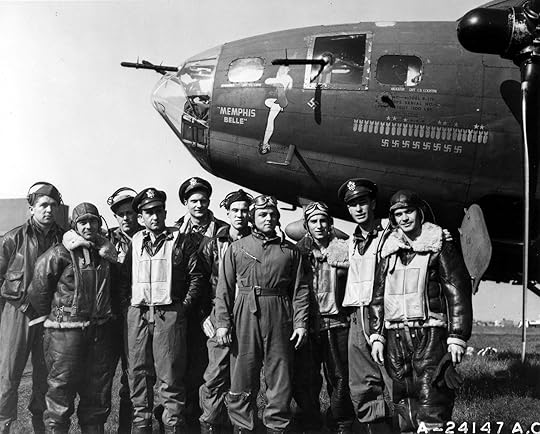
B-17 Memphis Belle and her crew in England, 7 June 1943 (US Air Force photo)
75 Years Ago—May 17, 1943: The crew of B-17 Memphis Belle becomes the first entire crew to complete a 25-mission tour in the US Eighth Air Force in England.
On Attu in the Aleutians, US Army secures Holtz Bay and Jarmin Pass.
May 16, 2018
Today in World War II History—May 16, 1943

Möhne Dam in Germany after the RAF Dambuster Raid, 18 May 1943 (British Government photo)
75 Years Ago—May 16, 1943: RAF’s Dambuster Raid: 19 modified Lancaster bombers destroy the Möhne and Eder dams in Germany’s Ruhr Valley with “bouncing bombs,” causing severe flooding.
Germans crush Jewish ghetto uprising in Warsaw; 13,000 killed in uprising, 50,000 captured.
May 15, 2018
Royal Wedding Giveaway!
 To celebrate the wedding of Britain’s Prince Harry and America’s Meghan Markle on May 19, 2018, five authors of novels set in Britain are holding the Royal Wedding Giveaway! Each of us is sharing about the Royal Family in our novel’s era—and giving away a copy of the book! Hear from…
To celebrate the wedding of Britain’s Prince Harry and America’s Meghan Markle on May 19, 2018, five authors of novels set in Britain are holding the Royal Wedding Giveaway! Each of us is sharing about the Royal Family in our novel’s era—and giving away a copy of the book! Hear from…
Sarah Ladd, author of The Weaver’s Daughter (Regency–her post is on Facebook)
Joanna Politano, author of Lady Jayne Disappears (Victorian)
Carrie Turansky, author of Across the Blue (Edwardian)
Sarah Sundin, author of The Sea Before Us (World War II)
Katherine Reay, author of The Austen Escape (Contemporary–her post is on Facebook).
Giveaway runs May 15-19, 2018. See details and enter the giveaway below.
The British Royal Family in World War II
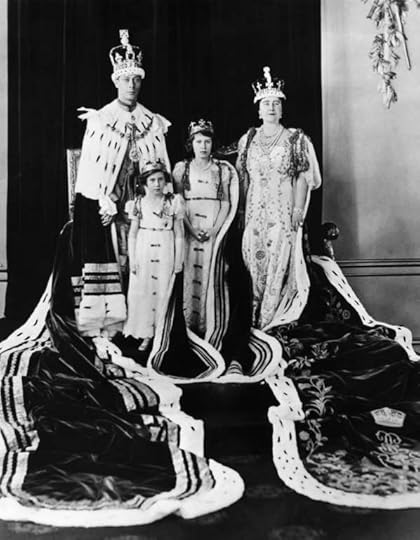
Coronation portrait of King George VI, Queen Elizabeth, and Princesses Elizabeth and Margaret, London, England, 12 May 1937 (United Kingdom National Archives)
During World War II, King George VI sat on the throne of England, with Queen Elizabeth at his side—better known to modern generations as the “Queen Mum.”
King George VI was crowned in Westminster Abbey on May 12, 1937, at the age of 41, after the controversial abdication of his older brother King Edward VIII. King George VI was born in 1895, Queen Elizabeth in 1900, and they were married in 1923. Princess Elizabeth (Queen Elizabeth II) was born in 1926 and Princess Margaret in 1930.

King George VI of the United Kingdom delivering his radio address announcing Britain’s entry into the war with Germany, Buckingham Palace, London, 3 Sept 1939 (United Kingdom National Archives)
On September 1, 1939, World War II began when Germany invaded Poland. The United Kingdom declared war on September 3, and the king addressed the nation that evening. Children were evacuated from London in anticipation of German bombing, and the princesses stayed at Balmoral Castle in Scotland for the first few months of the war and at Windsor Castle for the majority of the war years. However, the king and queen refused to leave London and refused to send the princesses to Canada as many urged. Queen Elizabeth stated “The children won’t go without me. I won’t leave the King. And the King will never leave.”
From the beginning, the Royal Family aided the war effort. In November 1939, Queen Elizabeth urged British women to contribute to the war effort, and she published The Queen’s Book of the Red Cross, with contributions from fifty British authors and artists, with the funds aiding the Red Cross.
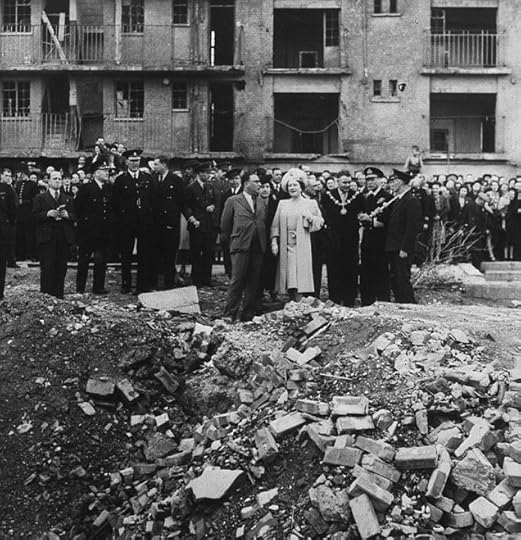
King George VI and Queen Elizabeth visit the East End, the site of the last V-2 to fall on London on 27 Mar 1945, visiting on 4 Oct 1945 (United Kingdom National Archives)
When the German Luftwaffe began bombing London in September 1940, the impoverished East End was devastated. The queen visited the ravaged neighborhoods but was poorly received at first. On September 13, bombs hit Buckingham Palace for the first time. Queen Elizabeth stated, “I’m glad we’ve been bombed. It makes me feel I can look the East End in the face.” Quickly, the king and queen’s insistence on staying in Buckingham Palace, their strict adherence to rationing and other restrictions, and their compassionate visits to victims of the Blitz won over the population.
On May 20, 1941, the king and queen visited Plymouth, and missed a bombing of that city—planned by the Germans to coincide with their visit—by only hours. The queen’s fortitude and her extremely positive impact on morale caused Adolf Hitler to call her the “most dangerous woman in Europe.”

King George VI with Gen. Bernard Montgomery at British 21st Army Group Headquarters in the Netherlands, 13 Oct 1944 (Imperial War Museum)
King George VI visited the troops in England, including the many American troops who would be stationed on British soil. He also made frequent trips to visit the commanders and troops overseas—to France in December 1939, North Africa and Malta in June 1943, Normandy in June 1944, Italy in July 1944, and the Netherlands in October 1944. His willingness to visit so close to the front lines endeared him to the troops.

Princess Elizabeth with B-17G Rose of York of the US 306th Bombardment Group, Thurleigh, England (US Army Air Forces photo)
While no royal weddings occurred in England during World War II, the seeds of a romance were sprouting. At the age of 13, Princess Elizabeth became infatuated with a young man and began exchanging letters in July 1939. That young man? Her future husband, Prince Philip of Greece and Denmark. They were married in 1947.
The young princesses stayed in Windsor Castle for most of the war. They aided the war effort through the Girl Guides and the Sea Rangers. On October 13, 1940, Princess Elizabeth gave her first radio broadcast, on the BBC’s Children’s Hour, to encourage child evacuees far from home and family. And in 1943, at the age of 16, Princess Elizabeth began more public appearances.

Princess Elizabeth, 2nd Subaltern in the Auxiliary Territorial Service, April 1945 (Imperial War Museum)
In February 1945, despite her parents’ objections, Princess Elizabeth enlisted in the Auxiliary Territorial Service (ATS), the women’s auxiliary of the Royal Army. She was the first female member of the Royal Family in history to serve as an active member of the armed forces. Trained as a mechanic and driver, she became proficient with a number of military vehicles. She loved having dirt under her fingernails and still has a fondness for driving.

Princess Elizabeth, Queen Elizabeth, Winston Churchill, King George VI, and Princess Margaret on the balcony of Buckingham Palace, London, 8 May 1945 (US Army photo)
On May 8, 1945, the Allies celebrated Victory in Europe Day. Princesses Elizabeth and Margaret, with permission from their parents, anonymously joined the rejoicing crowds in London, “swept along on a tide of happiness and relief.” The Royal Family and Prime Minister Winston Churchill appeared on the balcony of Buckingham Palace before a jubilant crowd.
Without a doubt, the indomitable spirit of the Royal Family helped the people of the United Kingdom through their darkest times.
 The Royal Wedding Giveaway!
The Royal Wedding Giveaway!To win a copy of The Weaver’s Daughter, Lady Jayne Disappears, Across the Blue, The Sea Before Us (if you already have a copy, I can put you on the list to receive The Sky Above Us when it releases in February 2019), and The Austen Escape, please enter the Rafflecopter below. Everyone receives one free entry, and you can gain extra entries by subscribing to each author’s email newsletter—or for being a current subscriber.
Giveaway runs May 15-19, 2018. Open to US residents only. No purchase necessary. One winner will be randomly selected via Rafflecopter and will be contacted via email. If the winner does not collect the prize within 2 weeks of notification, the prize will be forfeited.
Today in World War II History—May 15, 1943
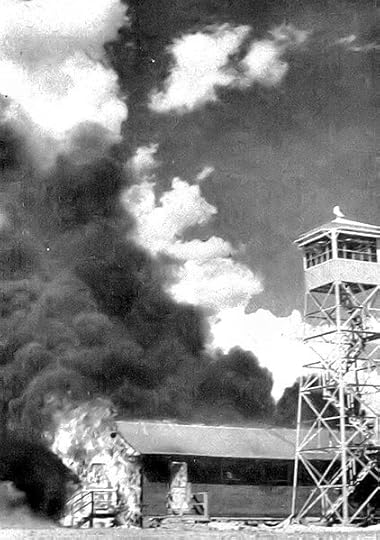
Fire caused by errant bats from the experimental bat bomb, Carlsbad Army Air Base, NM, 15 May 1943 (US Army Air Force photo)
75 Years Ago—May 15, 1943: Germans launch fifth offensive against Tito’s Partisans in Yugoslavia.
US Army ends experiment in using “bat bombs” as bats burn down newly constructed, unoccupied Carlsbad Army Air Base, NM; plan was for bats carrying incendiary bombs to be dropped over Japan, where they would roost under eaves and destroy buildings.
May 14, 2018
Today in World War II History—May 14, 1943

US Army Air Forces recruiting poster featuring B-26 Marauders, WWII
75 Years Ago—May 14, 1943: Australian hospital ship Centaur is sunk by Japanese sub I-177 off Brisbane, 268 killed.
US Eighth Air Force in England launches first mission with over 200 bombers and first with Martin B-26 Marauder medium bombers.
May 13, 2018
Today in World War II History—May 13, 1943
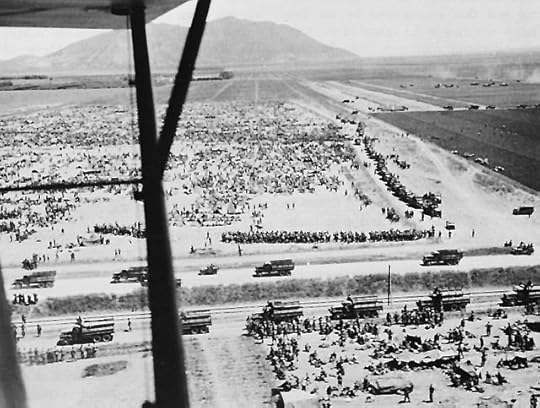
Axis prisoners of war at Mateur, Tunisia, 9 May 1943 (US Army Center of Military History)
75 Years Ago—May 13, 1943: Official surrender of Axis forces to the Allies in Tunisia, placing all of North Africa in Allied hands.
Four new bomb groups begin operations with the US Eighth Air Force in England, doubling strength (94th, 95th, 96th, and 351st Bombardment Groups with B-17s).
B-17 Hell’s Angels of the 303rd Bombardment Group is the first heavy bomber in the US Eighth Air Force to complete a 25-mission tour (not the first complete crew to complete a tour).
Danish resistance damages railway at Tønder.

Emblem of the US 94th Bombardment Group
May 12, 2018
Today in World War II History—May 12, 1943

German Gen. Jürgen von Arnim after his surrender to the Allies in Tunisia, May 1943 (US Army Center of Military History)
75 Years Ago—May 12, 1943: German and Italian troops surrender in Tunisia, ending the campaign in North Africa; Allies take 225,000 prisoners.
British First Arakan Campaign in Burma ends as Indian troops evacuate Maungdaw.



